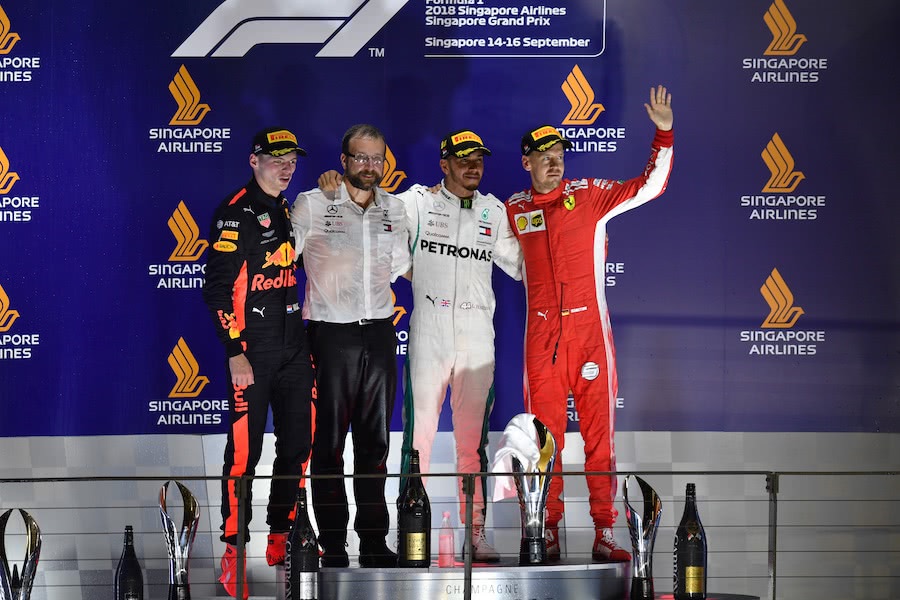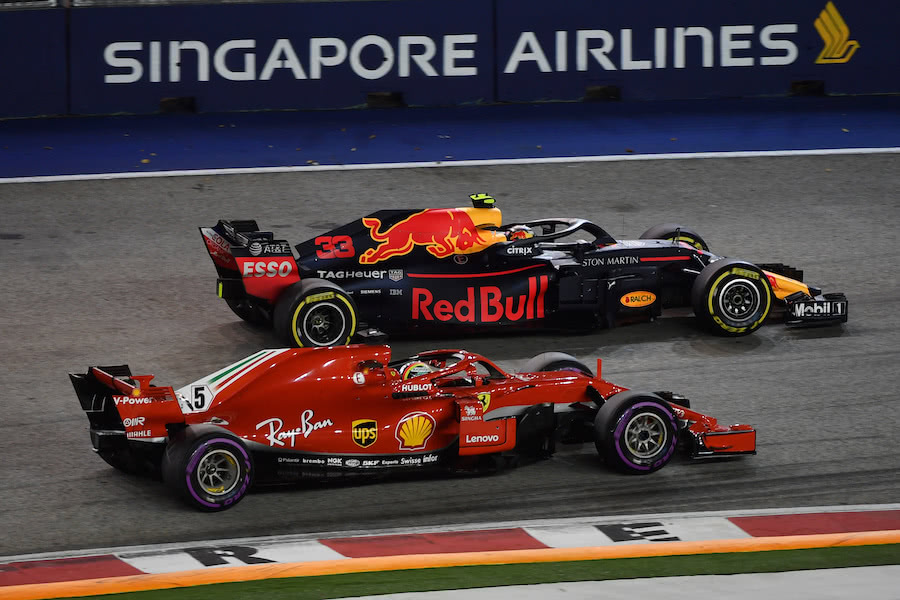The Formula 1 Singapore Grand Prix is a fan’s paradise, but an intense physical challenge for the drivers. We look at four reasons why…
Formula 1 drivers are some of the fittest athletes on earth; the world’s 20 best shredding in the gym every pre-season to be able to race these state-of-the-art cars over a Grand Prix distance without fatigue.
But the toughest test is yet to come, at the 2019 Formula 1 Singapore Airlines Singapore Grand Prix. Here are four reasons why the event always pushes the drivers to the limit.
1) IRONMAN CHALLENGE
The drivers have to race up to 320km/h for almost two hours, enduring around 4-5g in corners and under braking, with high cockpit temperatures throughout it. Fitness for concentration is therefore crucial.
“It’s just so hot, man,” says five-time F1 World Champion Lewis Hamilton, who races for Mercedes.
“You have long sleeve underwear on, balaclava and then the suit on top of that – which is another three layers, and then gloves. Then you go in a sauna. And even if you open your visor, there is no cool breeze coming in, so you are sweating before you even get in the car.”
Love Music?
Get your daily dose of metal, rock, indie, pop, and everything else in between.

2) SPECIFIC TRAINING
To ensure maximum concentration during the race, the drivers will do targeted heat training for more than a month out from the event, some using a sauna to simulate the hot and humid conditions. The type of training might involve an intense aerobic conditioning session, featuring six by three-minute fast-running efforts with a three-minute recovery in between.
“There are so many corners, and not many straights,” says Haas F1 Team driver Kevin Magnussen. “So you are really working the whole time. You’re not going straight, so you’re not able to relax anywhere. And then because it’s a relatively low-speed track, that almost always takes us up to the two-hour limit, which is obviously very tough.”
3) REMAINING COOL
Staying cool in the car is a major focus at Singapore’s Marina Bay Street Circuit, and the teams have strategies to cope with that, including electrolyte drinks to replace fluid loss, and the use of cooling vests whenever the drivers are out of the car or on the grid in the lead-in to the race.
Red Bull Racing driver Daniel Ricciardo is the most extreme example, with the Australian admitting that he will drink five-litres of water straight after the race. “You feel the heat when you’re in the car, but when you stop after the race and the adrenaline decreases you feel it even more,” he says.

4) THE SCHEDULE
The teams don’t adapt to local time during the Formula 1 Singapore Grand Prix weekend, staying on European time in the city-state to be best at night.
Red Bull Racing’s Team Manager Jonathan Wheatley explains how it works.
“The flights actually work out in our favour in that respect,” he says. “Because they come in in the evening, the guys get there and can have a night out if they like for their first night in Singapore, and they don’t actually have to go to bed until six or seven o’clock in the morning.”
For the drivers, the hard work starts now, with the 2019 Formula 1 Singapore Airlines Singapore Grand Prix in under two weeks – and Hamilton and his 4-time F1 World Champion rival Ferrari’s Sebastian Vettel duking it out for a fifth win in Singapore and outright honours.
It will also be Ricciardo’s first visit to Singapore with his new team Renault, and lots of pride on the line with the Perth-born driver a Marina Bay specialist with four podiums in the last five visits. There’ll also be a huge home crowd cheering him on in Singapore, with the famed city-state a short flight away.
The Formula 1 Singapore Airlines Singapore Grand Prix 2019 will be held from September 20-22, with more information at singaporegp.sg.


































